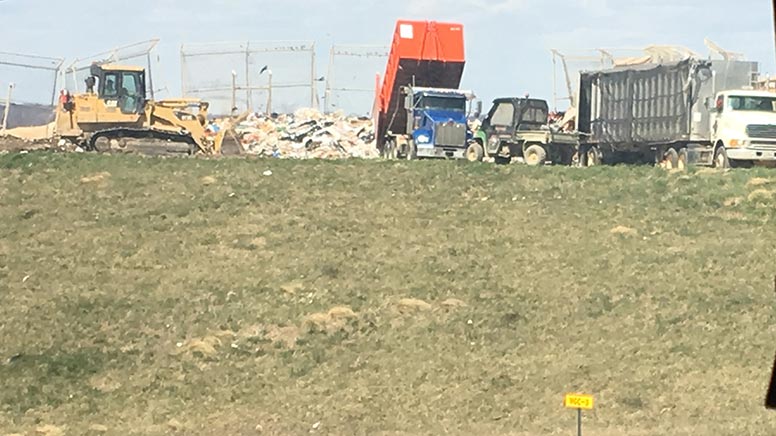Cecil Leadership Institute tours county landfill
Published on April 9, 2018

NORTH EAST, Md. — Members of the Cecil Leadership Institute received a unique behind-the-scenes look at an institution within the county the general public rarely thinks about, Cecil County’s Central Landfill. Located just off Route 7 between the Village of North East and the City of Elkton, the Cecil County landfill is situated on more than 400 acres within the Elk Neck State Park. Operated by the county government since 1979, the Solid Waste Management Division is self-funded through tipping charges applied to companies and individuals disposing of waste at the landfill. “Most people don’t give a second thought of where that cup they just threw in the trash will end up. We do,” said Cliff Engle, Cecil County’s Chief of Solid Waste. “The reasoning for that is we have to comply with state and federal regulations, so we need to know what is being brought in here to the landfill.” The landfill accepts nearly 600 tons of trash daily, is strategically placed on one of the five zones within the property. The landfill accepts residential, commercial, industrial, and institutional waste from within the county. The landfill does not take waste originates outside of Cecil County. The Solid Waste Management Division operates two satellite stations – Woodlawn Transfer Station in Port Deposit and Stemmers Run Transfer Station in Earleville. The waste is transported from these locations to the central landfill for disposal. After the waste is spread out across the mound, the trash is covered with dirt each night to prevent it from blowing off the site. It also introduces natural organisms to promote decomposition. “Landfills are a necessary evil, so if we’re going to do it, we’re going to do it in the best way we know how. My hope is alternatives will be developed in the future, so we don’t have to have landfills. But that would put me out of a job, and that is fine with me,” quipped Engle. According to Engle, the landfill has between 40 and 100 years left. There is no room for expansion due to be located within a state park, creating some critical decisions for leaders of the future. When the landfill is eventually closed, it will be capped with a barrier to capture all the byproducts of decomposition such as methane gas. Currently, there are methane gas wells drilled into the landfill, and this gas is destroyed at an on-site facility that resembles a giant Bunsen burner. This facility burns off 98 percent of the toxic elements that create Greenhouse Gases. This gas is not used to generate electricity due to the cost of building an electric generation plant. Engle and his team of more than 20 employees take as many efforts as possible to reduce pollution. They use a liner to limit ground contamination, take measures to reduce water runoff and promote recycling. The landfill recycles a wide range of materials, from oil filters and electronics to plastic products and even bras. Once capped, the land can’t be used for much other than open spaces such as community parks or golf courses. The landfill, which is more than 750 feet in elevation, will shift and settle over time making construction unstable.

